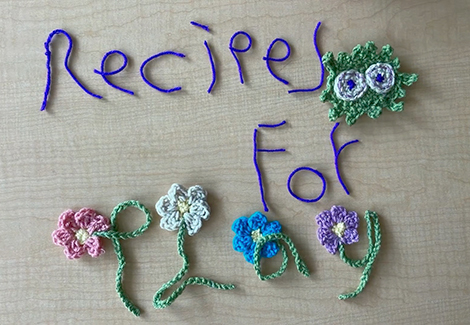Paper Making or Re-Making
What You’ll Need:
- Recycled newspaper or dryer lint (~20 cups)
- 1 cup concentrated commercial liquid starch
- Bowl
- Warm Water
- Blender
- 2 Tubs (like storage tubs)
- 8-10 cups of pulp (see making the pulp section)
- Sponge
- Spray bottle
- Mold and Deckle
- Towel
- Drying board(s) depending on size –have enough area to dry all made paper sheets.
Set-Up:
Gather supplies needed and prepare a workspace.
Making the Pulp
- Tear recycled newspaper or dryer lint into small (1” to 2”) pieces.
- Soak lint or recycled newspaper in a bowl of warm water for at least 30 minutes. If there is time, soak it overnight to help break it down.
- Blend a cup of lint or newspaper in a blender for 3 minutes.
- Pour blended mixture in the storage tub.
- Repeat process until completely blended.
Forming Paper Sheets
Set-Up:
Gather supplies needed and prepare a workspace outside in an area that is able to get wet.
What to Do:
- Fill a tub about one-thirds full of water & 1/2 cup of liquid starch.
- Add 4-5 cups of pulp. The thickness of sheet is determined by the proportion of pulp to water; the more pulp you put in the tub, the thicker the paper will be. Each time you form a new sheet, add another 1-3 cups of pulp.
- Wet the mold’s screen by dipping it into the tub. Position the mold, screen side up and the deckle over the top of the mold. With your other hand, stir the pulp in the tub with your fingers spread wide, to disperse the pulp throughout the water.
- Holding the mold and deckle in both hands, dive them, to the bottom of the tub; the leading edge should be almost vertical when entering the water, before leveling the mold and deckle into a horizontal position when completely submerged. Keep them horizontal and bring to the surface. They will have a thin layer of wet fibers on them. Give them some quick shakes.
- When most of the water is drained, rest the mold and deckle on the edge of the tub with one hand. Remove the deckle with your other hand. When removing the deckle, lift it straight up.
- Place the mold on a flat surface and, fiber side up. Fold a towel in half and gently place the towel over the fiber on the screen once to blot out some water.
- With a spray bottle, spray a paper-size section on the drying board liberally with mater. Flip the mold onto the wet board, fiber-side down. Sponge water out of the sheet with an absorbent sponge by firmly pressing the sponge against the back of the screen. Go over all areas of the sheet with the sponge 4-5 times. Remove the mold from the board, leaving the sheet of fiber on the board. Gently press the sheet with a sponge another couple of times, removing more water and pressing out any air bubbles.
- Leave the sheet on a drying board for 1-2 days.
- Repeat process until pulp is all used.
Ideas for More:
- Use fruits and vegetables; try flowers or other plants as part of the fiber source. See The Gourmet Paper Maker: Handmade Paper from Fruits and Vegetables. Minnetonka, MN: Creative Publishing.
- Add essential oil to give your paper a sweet scent.
- Use alum to change the color of the paper.
- Replace the plant fiber with paper products such as telephone directories, and egg cartons. Run the blender an extra 10-15 seconds after adding the paper product.
- Create a journal with homemade your paper.
Length of Activity:
Soaking – 30 minutes to overnight
Blending – 3 minutes
Making paper: 15-20 minutes
Letting it stand – 1-2 days
Resource:
Lockie, Ellaraine. The Gourmet Paper Maker: Handmade Paper from Fruits and Vegetables. Minnetonka, Minn.: Creative Pub. International, 2001. Print.
Todman, Tonia. Tonia Todman’s Paper-making Book. Rozelle, NSW, Australia: G.A., 1992. Print.



